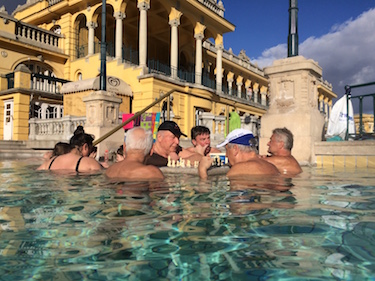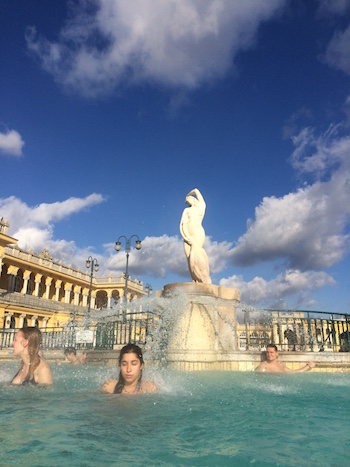There’s something wonderfully relaxing about being immersed in hot water with your head sticking up into frigidly cold air.
We discovered this a few years ago when we rented a cabin in the North Georgia Mountains. It had a hot tub and it was January. After the mad dash-n-dive across the porch it gets a whole lot more enjoyable. And on that occasion it started to snow. We looked, I’m sure, like those little monkeys in Japan that sit in the hot water while the snow piles up on their heads.
It might’ve snowed when we were in the thermal baths in Budapest, being January. But it didn’t. So at least we didn’t have to worry about slipping in the ice and slush. Instead it was a simple matter of boarding Budapest’s wonderfully vintage M1 subway line bound for the Széchenyi (SHUH-wut-EV-er) Baths. Budapest has several thermal baths to choose from, but these are the biggest and the most public (versus the privately owned Gellert Baths at the opulent Gellert Hotel).
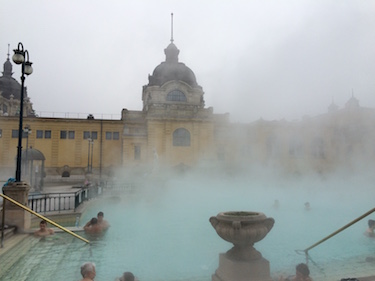
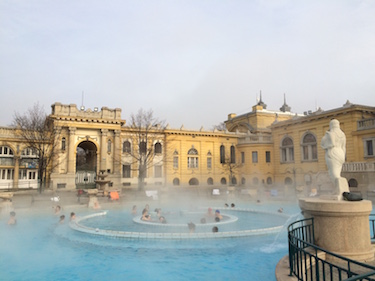
The thermal bath concept goes all the way back to Roman times. Geothermal water is channeled and guided and cajoled into a convenient spot for humans to slip into. In the case of Széchenyi, it’s 3 swimming pool sized “baths” of varying temperatures. The large rectangular pool in the middle is the coolest and intended for swimming laps; if you get in, make sure you’re wearing a swim cap or a large Hungarian man (or even scarier, woman) will sternly wag their finger at you.
The pool on the west end, the one with circular benches, is the next warmest. The inside of the benches are meant for people to exercise by walking around in a circle and creating a “whirlpool”. You can sit and lounge on the outside of the benches.

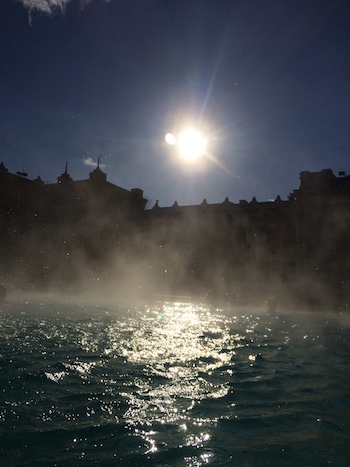
It’s the third pool, the hottest, on the east end that we spent all our time in, and we went twice while in Budapest. It’s a toasty 100 degrees. We could have had it about a degree warmer, but it was just the right temperature to lounge for a couple of hours, in spite of the sign warning not to (the sign which everyone ignores). This also is the pool where Hungarian men enjoy a game of chess and the “swan lady” statue sprays back-massaging water.
When you go to Budapest, visiting a bath is a must-do. The facilities are clean and well-organized. The waters are naturally heated and free of added chemicals: filtration is by letting the water flow through and out of the baths. Cost is about $20 per person, a bit less on weekdays. That includes the pretty much necessary splurge for a private changing cabin. Bring your swimsuit, flip-flops, and a towel, or plan to rent or buy them there.
